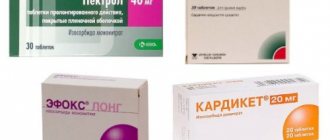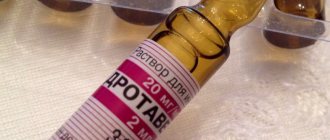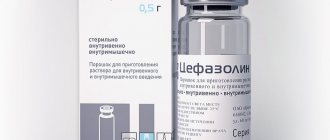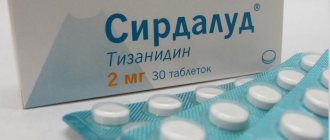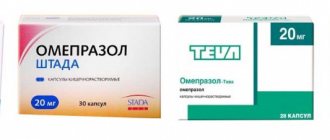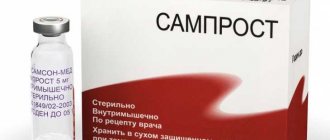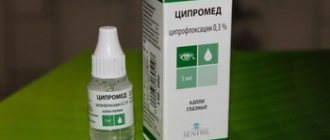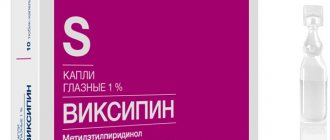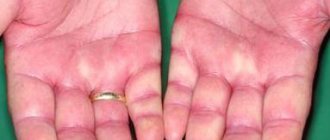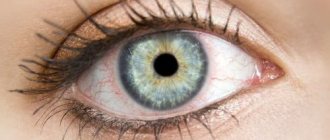Instructions for use of Otipax contain a detailed description of the drug and very important information that should be read by everyone who has been prescribed this medication.
Painful sensations in the ear are probably familiar to many people who have at least once encountered a similar phenomenon. Pain in the ears is a sign that an inflammatory or infectious process is developing in the area of the ENT organs. To get rid of this, doctors prescribe complex therapy, in which ear drops play a key role.
Description of the drug
Pain is a frequent companion to acute and chronic ear diseases, which are predominantly inflammatory in nature. One of the most effective means to eliminate such symptoms is Otipax ear drops. The medicine is produced by a French manufacturer.
In most cases, Otipax ear drops are prescribed as an individual medicine for the treatment of a number of diseases associated with the ENT organs. But sometimes the drug is supplemented with antibiotics, which significantly enhances the effect of therapy.
The drug is sold in the form of ear drops. Otipax resembles an oily liquid and is characterized by a faint alcoholic odor. The color of the product is absolutely transparent, but depending on the batch it may have a slightly yellowish tint.
Ear drops are sold in almost any pharmacy and are available without a prescription. The original bottle of the medicine is made of dark glass, with a capacity of 15 ml. In addition, each bottle comes with a sterile rubber dropper, which makes the instillation procedure much easier.
Otipax drops have a wide spectrum of action, which, in fact, determines their high popularity.
Composition of the drug
Otipax ear drops, which are suitable for adults and children, include the following components:
- Phenazone. A non-steroidal substance from the group of analgesics, due to which it is possible to minimize or completely eliminate pain caused by the inflammatory process.
- Lidocaine. Local anesthetic. Reduces the sensitivity of nerve endings, dulling the painful syndrome.
The combination of these two components allows you to quickly provide an anesthetic effect that lasts longer than if you use one of them.
As auxiliary components, Otipax ear medicine contains the following substances:
- sodium thiosulfate;
- ethanol;
- glycerol;
- distilled water.
The composition of ear drops is not unique and, if desired, you can choose an analogue of the medication. Some, guided by the recipe data, even try to make their own medicinal composition. But dripping homemade solutions into the ear without first consulting a specialist is dangerous to your health!
Read on to find out when Otipax is indicated for use.
Compound
The main active ingredients of the drug Otipax contain:
- Phenazole, which belongs to non-steroidal anti-inflammatory drugs, in a volume of 40 mg, as well as lidocaine hydrochloride, which represents an analgesic group, in a volume of 10 mg.
- Among the additional components of Otipax, the presence of substances such as sodium thiosulfate, water and small amounts of glycerol, ethanol, etc. should be highlighted. The latter do not have a pharmacological effect on the body.
Indications for use
Otipax has an anti-inflammatory and analgesic effect, so it is advisable to use it in almost any treatment of diseases of the ENT organs that cause complications in the ears.
The drug is used in the presence of a painful syndrome as a symptomatic treatment. This suggests that its action is aimed at eliminating symptoms, and not at the cause of the disease. Otipax for children and adults is indicated in the following cases:
- developing external inflammation of the middle ear;
- otitis media in the initial form;
- otitis media in acute form at the stage of development of the inflammatory process;
- otitis, as a result of sinusitis, sore throat, rhinitis;
- otitis media, which is a complication after suffering from the flu;
- otitis media developing against the background of traumatic injury to the ear;
- barotraumatic otitis, provoked by a sharp change in pressure - observed, for example, in people who are keen on rock climbing or diving.
In addition, Otipax is effective against ear congestion, as well as against cerumen.
The main task of Otipax ear drops is to relieve the painful syndrome, and not to eliminate the cause of the disease that provoked such concomitant symptoms.
The ear drug Otipax has a powerful anesthetic effect, but at the same time it does not contain any antibacterial or antimicrobial components. Therefore, if the disease develops due to the ingestion of a microbial form of bacteria, then the effectiveness of the medication is in question. In this case, it is more effective to use complex drugs that contain both anesthetics and antimicrobial components. Although this is all purely individual, at the discretion of the attending physician.
Read on to learn how to use Otipax.
Properties of the drug Otipax
Otipax
Otipax is a fairly well-known drug that is used by ENT doctors. It contains two main active ingredients - lidocaine and phenazone, each of which performs important functions:
- Lidocaine is a well-known anesthetic substance that is used very widely in medicine. True, not all people can tolerate it, as an allergic reaction may develop.
- As for phenazone, it is not only an anesthetic substance, but it can also relieve inflammation. Its effect on lowering body temperature is very unusual. Phenazone is an antipyretic, that is, it can have a lowering effect on body temperature.
Patients note that already five minutes after instillation, the pain begins to subside, and after another ten minutes it completely disappears. Due to the excellent interaction of the substances that make up the drug with each other, the effect lasts for a long time, and therefore eliminates the need to use drops frequently.
Directions for use: dosage, frequency
Attention! The information provided in this publication is for informational purposes only. It is highly undesirable to engage in self-diagnosis and self-medication. This is fraught with negative consequences for the patient’s health, in particular, we can even talk about hearing loss!
In order for ear drops to have maximum effect, you need to know how to use them. The speed of relief from the painful syndrome, as well as the relief of accompanying symptoms, depends on the correct use of the medication. Also, an incorrectly performed instillation procedure can provoke the development of additional complications in the middle ear area, which can aggravate the course of the existing disease.
According to the annotation, the therapeutic course of use of the medication is 7-10 days. The manufacturer does not recommend using Otipax ear drops for more than the specified period. The actual period of use of the medicine is regulated by an otolaryngologist - only a qualified specialist can, after conducting an examination and reviewing the results of clinical studies, determine the cause of the development of the inflammatory process and prescribe appropriate treatment.
A one-time use against the background of pain for an adult or child is characterized by a short-term effect. For this reason, it is highly undesirable to stop taking the drug and reduce the number of drops indicated in the doctor’s prescription after relieving ear pain. The indications must be strictly followed and at the slightest deviation from the treatment the doctor must be brought up to date. This will allow timely adjustment of therapy in order to eliminate alarming symptoms.
The anti-inflammatory effect with proper use of Otipax ear drops occurs, in most cases, already 3 days after the start of taking the drug, and the elimination of pain is observed within a quarter of an hour from the moment the medicine is instilled into the external canal of the ear.
How to properly instill Otipax for otitis media? Let's figure out how to use the drug:
- First of all, before the procedure, you must thoroughly wash your hands to avoid pathogens entering the already affected ear. If desired, you can even wear sterile gloves.
- After this, the auricle and ear canal should be cleaned of dirt. To do this, you can use hydrogen peroxide or camphor oil - both products will soften hardened dirt and wax, and will help to carefully remove it from the ear.
- Using an ear swab to clean the ear canals can lead to blockage of the canal and, as a result, the formation of wax plugs. Therefore, many otolaryngologists recommend rinsing the ear canals with warm water or using one of the above remedies.
- To avoid slight dizziness and discomfort, the drug must be warmed to a temperature of 35-36°C before being introduced into the ear canal. The easiest way to do this is to hold the bottle of medicine in your hand for several minutes - then the medicine will reach body temperature.
- Now we check the rubber dropper for chips or cracks. This will avoid overdosing and spilling the medicine.
- We take the correct position - lie on our side, with the sore ear facing up. This will allow the medicine to be distributed as much as possible throughout the tissues of the diseased ear.
- We turn the bottle with the medicine over and check whether the medicine has reached the dropper.
- We slightly pull the auricle back and up, which will open the ear canal. We insert the dropper into the ear no deeper than 5 mm and instill the number of drops indicated in the doctor’s prescription. After this, lightly press down on the wheel so that the medicine penetrates better into the cavity of the ear canal.
- Upon completion of the procedure, close the ear canal with cotton wool, pre-lubricated with Vaseline, and remain in the original position for another quarter of an hour. This approach will prevent the evaporation of the medication and allow it to be absorbed and penetrate into the affected ear tissue as much as possible.
- All that remains is to tightly close the bottle with a lid and put it in the refrigerator. This will allow you to preserve all the medicinal properties of the medication throughout the expiration date specified by the manufacturer.
We figured out how to properly drip Otipax into the ear. Now regarding the dosage. The abstract contains the following data: the medication is intended exclusively for external use.
The medication is dripped into the external auditory canal, 3-4 drops, 2-3 times a day. But, again, everything is at the discretion of the attending physician, who must take into account all the nuances of the course of the disease, as well as the age of the patient.
Method of use and side effects of the drug
Dosage of ear drops
Typically, a course of treatment with drops lasts from seven to ten days. For adults, drops are allowed to be used no more than two or three times a day. Moreover, it is necessary to drip three or four drops. For the best effect.
As for newborn children, the dosage in this case is determined individually, based on the advanced state of the baby’s disease. The same can be said about older children, for whom the drug is allowed to be used, but this can only be done after a doctor has prescribed it and determined the dosage.
Due to the fact that it is better to store Otipax in the refrigerator, before using the medicine you need to warm it in your hands so that it becomes room temperature and the instillation process does not cause discomfort. One of the features of the drug, unlike others, is that after opening the bottle, it can be stored. The main thing is to observe the temperature regime.
Otipax is one of the most modern drugs that can cause minimal side effects.
Due to the fact that it acts locally, it is practically not absorbed into the blood. But still, if used incorrectly or used without a doctor’s prescription (that is, without following dosages and taking into account personal characteristics), adverse reactions may occur.
More information about otitis media can be found in the video.
Antibiotics in suspension for children: purpose, types and use
Side effects of the drug:
- Allergy. As a rule, an allergic reaction occurs to lidocaine. Less often on phenazone. Hives and itching may appear.
- Redness of the skin inside or outside the ear.
- Skin irritation.
- Deafness, both partial and complete, which occurs if the drug is used in the presence of a damaged eardrum.
That is why, before you start using Otipax, you need to be examined by a doctor who will completely examine your ear and prescribe the necessary medications.
A few words about the safety of the drug
Many patients are interested in whether Otipax is an antibiotic or not? Judging by the composition, and according to the manufacturer, this medication does not belong to the category of antibiotics.
As for the issue of safety of taking Otipax. Back in 1993, clinical studies were conducted, during which it was possible to confirm the effectiveness and safety of using this drug in medical practice.
Thanks to its safe composition, the medicine can be prescribed not only to adults, but also to children. Moreover, in pediatrics, Otipax is prescribed even in newborns.
This safety is due to the fact that the substances of the medication do not penetrate the mucous membrane of the ear tissue and, accordingly, do not enter the bloodstream. In addition, all components of Otipax drops are removed without residue.
Pharmacodynamics and pharmacokinetics
Inflammation in the ear canal is always accompanied by severe pain. Otipax has a local anesthetic effect. The medicine also actively fights the inflammatory process and kills bacteria, eliminating not only the symptoms, but also eliminating the cause of the disease.
The drops are intended for instillation into the ear canal. The effect is observed 5-10 minutes after application and lasts up to 4 hours. The components of the composition do not penetrate the body through tissue if the eardrum is intact. The product helps soften mucus in the ear canal and remove it.
Adverse reaction
Clinical studies show that side effects when using Otipax ear drops are extremely rare. But possible side effects may include the following:
- hyperemia;
- irritation on the tissues of the ear canal;
- allergic reaction - itching, burning, redness, rash.
If you take the medication in accordance with the doctor's instructions, there will be no side effects.
If one of the side effects occurs, it is recommended to consult a doctor to select an analogue of the drug.
Otipax is used as drops in the ears, that is, only externally. If the medication suddenly gets inside the body, the following symptoms may appear:
- dizziness;
- vomit;
- nausea;
- weakness;
- diarrhea.
If the medicine gets inside, it is necessary to rinse the stomach as quickly as possible and take sorbents.
Side effects
When using Otipax, side effects can often develop, which are not always caused by the presence of contraindications, but also by the possible development of allergies or other conditions.
Among them are the following:
- The development of an allergic reaction, which usually manifests itself after the first use. This is revealed by redness of the ear cavity, the development of itching and burning, as well as possible swelling of the auricle or ear cavity.
- The patient may experience a sharp deterioration in hearing due to swelling of the auricle.
- Irritation of the ear canal with the manifestation of similar reactions.
If adverse reactions occur, it is recommended to stop using Otipax. The use of symptomatic medications and consultation with specialized specialists is also required.
Contraindications, precautions
Not all patients can take Otipax for otitis media in adults or any other ear disease, even if indicated.
So, for otitis in adults and children, taking Otipax is prohibited in the following cases:
- Perforation/rupture of the eardrum. Under no circumstances should Otipax be instilled into a sore ear if there is a suspicion of damage to the eardrum.
- If there is an accumulation of pus in the cavity of the auricle, it is strictly forbidden to drip medicine into the ear.
- Hypersensitivity to the active and auxiliary components of the drug.
- Allergic reaction to lidocaine. Often this component can cause allergies. It is for this reason that it is necessary to conduct a drug compatibility test before the main use of a particular drug. We'll tell you how to do this a little later.
Only after consultation with a doctor can the medication be used even if there are chronic diseases of the ENT organs
Otipax in pediatric therapy
Instructions for use Otipax allows the medication to be prescribed to children. According to the abstract, symptomatic treatment with medication for otitis media can be carried out as part of antibiotic therapy for ear diseases in childhood patients. Some pediatricians prescribe the drug to newborns. And if the disease is just beginning to develop, then it is possible to stop the symptoms within the first day.
If the disease is not accompanied by ear pain, then there is no need to use Otipax. But at the same time, the medicine, even in the absence of pain, does not harm. It does not have a systemic effect on the body, which is its undeniable advantage.
As for the dosage, the annotation states the following: for newborns and children of the first year of life, Otipax can not only be dripped into the ear, but also used as a solution for wetting turundas, which are inserted into the ear canal 3-4 times a day for 1-2 hours. The frequency of instillation into the sore ear is 2-3 drops three times a day.
It is also worth adding that treatment of a child with any drug, including Otipax ear drops, should be regularly monitored by a pediatrician and otolaryngologist. Not to mention the fact that prescribing medicine yourself is extremely dangerous for the baby’s health.
Otipax's analogs
The drops have many analogues that are similar in composition and action.
Table 1:
| Drug name | Active components | What diseases does it treat? | Single dosage and how many times a day |
| Sofradex | Antibiotics | Otitis externa | 2-3 drops up to 3 times a day |
| Otinum | Choline salicylate, has anti-inflammatory and analgesic effects, contains lidocaine | External and otitis media, for removal of wax | 3-4 drops, up to 4 times a day |
| Anauran | Lidocaine and antibiotics | For acute and chronic otitis, effective for otitis with bacterial infection | Adults: 4-5 drops; children 2-3. Up to 4 times a day |
| Tsipromed | Antibiotic | External and otitis media | 1 drop, at least 2 times and no more than 8 times |
| Polydexa | Antibiotic | External and otitis media | Adults 1-5 drops; children 1-2. Up to 2 times a day |
| Otirelax | Complete analogue of otipax | Otitis at any stage | Children 1-2 drops; adults 2-3, up to 3 times a day |
| Otofa | Antibiotic | Otitis caused by bacteria | Adults: 5 drops; children: 2 drops up to 3 times a day |
| Sofradex | Antibiotic | Otitis caused by infection | 2-3 times to 4 times a day |
| Tsipromed | Antibacterial drug ciprofloxacin | Otitis externa | Prescribes ENT |
| Candibiotic | Combined drug containing antibiotics and anti-inflammatory components | Otitis at any stage | 4-5 drops up to 4 times a day |
Table 2:
| Drug name | A course of treatment | Age | Notes |
| Sofradex | Up to 10 days | From 3 years | Do not use if the eardrum is damaged |
| Otinum | No more than a week | From birth | Up to a year, the dosage is prescribed by an ENT specialist; an allergic reaction is possible |
| Anauran | No more than 7 days | since the year | Cannot be used if the eardrum is damaged, as well as for children under one year old, and pregnant women. |
| Tsipromed | No more than 10 days | Since the year | — |
| Polydexa | No more than 10 days | From birth | Do not use if the eardrum is damaged |
| Otirelax | Up to 10 days | From birth | It is not advisable to use during breastfeeding |
| Otofa | Up to 7 days | From birth | The course of treatment is prescribed by an ENT specialist for up to a year; it can be used to treat a damaged eardrum |
| Sofradex | Up to 7 days | Since the year | The dosage and course of treatment are adjusted by an ENT specialist. |
| Tsipromed | Prescribes ENT | From 16 years old | Not for lactating and pregnant women |
| Candibiotic | 7-10 days | From 6 years old | Fights fungus and bacteria if they are the cause of ear pain |
Otipax, compared to analogues, remains in first place in terms of effectiveness. According to the instructions, it does not pose a danger to children, since it has virtually no side effects and an overdose is impossible.
Author: Kotlyachkova Svetlana
Otipax during pregnancy and lactation
The drug Otipax is approved for use by patients during pregnancy and breastfeeding for the symptomatic treatment of inflammatory ear diseases accompanied by pain. And, despite the high safety indicators of the drug, instilling the drug without the knowledge of the doctor is extremely undesirable. It is recommended to consult a specialist. The doctor will determine the need to use this particular medication as part of therapy and tell you how to instill ear drops so that the drug shows maximum effect.
Interaction with other drugs
There is no data on the compatibility of the drug Otipax with other medications in the annotation. It is for this reason that it is recommended to inform your doctor about all medications taken during therapy.
If, while taking other medications, Otipax does not give positive dynamics and does not help get rid of the pain syndrome, then a doctor’s consultation is necessary, during which a decision is made to replace the medication with another that does not give a similar reaction to this or that drug.
The process of disposing of expired medicine
After Otipax has expired, it is handed over to special companies for disposal. This happens in several ways:
- chemical disinfection;
- steam sterilization;
- combustion in special furnaces;
- processing using microwaves.
REFERENCE! During the sale and storage of medicines, the pharmacist is guided by a large list of documents. The main ones are: Federal Law No. 61-FZ “On the circulation of medicines” dated April 12, 2010, Order of the Ministry of Health and Social Development of the Russian Federation dated August 23, 2010 No. 706n (as amended on December 28, 2010) “On approval of the Rules for the storage of medicines.”
special instructions
Before using the drug for its intended purpose, it is recommended to test for the presence of an allergic reaction to the active and auxiliary components of the drug. To do this, apply a few drops of the product to the wrist or elbow and observe the reaction of the skin. In these areas, the skin is very thin and sensitive, so if you are allergic to one or another component of Otipax drops, then upon contact with the epidermis in this area of the body a reaction will be observed.
If, after 3-10 hours, red spots or rashes do not appear on the skin, or it does not begin to burn or itch, then you can drop drops into the ear without fear that they will cause an allergic reaction.
As stated earlier, it is strictly forbidden to instill Otipax into the ear if there is any damage to the eardrum. Otherwise, complications may occur due to contact of the active components with the components of the middle ear, which can lead to hearing loss and even complete loss.
In addition, it is worth adding that the presence of uncharacteristic discharge from the cavity of the auricle - bloody, purulent or otherwise, prohibits the instillation of Otipax drops into the ear. This is fraught with negative consequences for the course of the existing disease.
Moreover, in this case, immediate consultation with a qualified specialist is required. Only a doctor can determine the etiology of the discharge and prescribe appropriate therapy.
Operating principle and properties
The pharmacological action of Otipax is achieved through the main active ingredients:
- Due to phenazole, which is a non-steroidal anti-inflammatory drug, which has a slight analgesic state with the development of anti-inflammatory effects. The action is achieved by blocking cyclooxygenase, which leads to inhibition of the synthesis of prostaglandin components.
- Thanks to lidocaine, which is a local anesthetic, there is a disruption in the conduction of pain impulses due to blocking or antagonistic effects on sodium or calcium, which are components of membrane complexes. Due to the combination of substances, a rapid analgesic effect develops, in addition, its intensity and duration increase. The liquefaction of mucus is stimulated, which facilitates its removal through the ear cavity through the Eustachian tube or eardrum.
The drug has the ability to act at the local level. It is not absorbed into the internal environment, but acts locally on the mucous membranes and skin. A prerequisite for this must be the absence of damage to the mucous membrane.
Terms and conditions of storage
How long can Otipax be stored? According to the manufacturer, if storage conditions are observed correctly, the drops can retain their medicinal properties for 5 years. But we are talking about closed packaging. After opening the bottle, the shelf life of the medicine is 6 months.
As for storage conditions, they are as follows:
- the place should be dry and dark;
- Children and animals should not have access to the medicine;
- temperature conditions – no more than 30°C;
- Freezing of the medicinal composition is prohibited.
How can I replace Otipax?
Otipax ear drops have a number of analogues.
In terms of composition, Otipax can be replaced with the following medications:
- Lidocaine + Phenazone. Not a bad alternative to Otipax. The cost is a little cheaper than the original.
- Otirelax. The drug is from a Romanian manufacturer. The cost is lower than the original. The composition contains the same active ingredients as Otipax, in the same proportion. Therefore, the dosage of this medication is the same as the original.
- Otinum. The drug is made in Poland. It has the same healing properties as Otipax. But unlike the original, Otinum contains only one active ingredient - choline salicylate. And it is not recommended to be taken during pregnancy, lactation, or for children under 18 years of age.
- Folicap. Medicine from a domestic manufacturer. It has a composition almost similar to the original and, accordingly, medicinal properties. It is taken in the same dosage as Otipax. But unlike the original, Folicap is sold in pharmacies only with a doctor’s prescription.
In addition to the drugs described, instead of Otipax, other medicinal compositions can be dripped into the ear, characterized by a mechanism of action similar to the original:
- Garazon;
- Polydex;
- Sofradex;
- Uniflox;
- Tsipromed;
- Anauran.
The drugs from the latest series cannot be called analogues, because their composition is somewhat different. And in cost they are unlikely to be cheaper than the original.
In any case, the decision to replace Otipax ear drops is made by an otolaryngologist. In this case, all the nuances of the composition of the analogue drug must be taken into account, as well as the presence of increased sensitivity to the chosen replacement.
Summarize
And to conclude the publication, let’s summarize:
- Instructions for use of Otipax drops characterize the medication as a high-quality and highly effective anesthetic. The range of its effects is ear diseases.
- Otipax is prescribed for various forms of otitis media, as well as for ear pain associated with the development of an inflammatory process due to ENT diseases.
- Thanks to its unique composition, the medicine quickly relieves the painful syndrome and fights the symptoms of the inflammatory process. But they use it only as a painkiller, and not as the main drug to eliminate the cause of the disease.
- The frequency and dosage of taking Otipax are indicated in the annotation. But this is purely average statistical data. A more detailed treatment plan is indicated by the doctor.
- Even knowing how to properly drop Otipax drops into the ear, using the medication without the knowledge of the attending physician is strictly prohibited. In order to eliminate negative consequences and side effects, the medication should be prescribed by a specialist. Only a doctor, taking into account the data of clinical studies and conducting an examination, can correctly make a diagnosis, on the basis of which the correct therapy is selected.
And to summarize all of the above, I would like to add: in order to prevent the development of ear diseases, it is recommended to avoid hypothermia. During the cold season, do not forget about a hat - it will always protect your ears from hypothermia. And strengthen the immune system - vitamins, proper nutrition - all this will help the body create a natural barrier that prevents the penetration of pathogens.
Taking good care of your body is the key to health and well-being!
Drug interactions
Before prescribing Otipax, the possible combination of its pharmacological action with other drugs should be taken into account.
The simultaneous use of Otipax with other local agents is not recommended. If it is necessary to introduce additional components into the ear cavity, it is necessary to carry out a strict sequence, preventing their mixing.
There is no data on the development of negative consequences with the simultaneous combination of Otipax and other systemic drugs. Agents with antimicrobial or anti-inflammatory activity, which are used systemically, help to cope with the emerging pathological focus much faster while standing.
